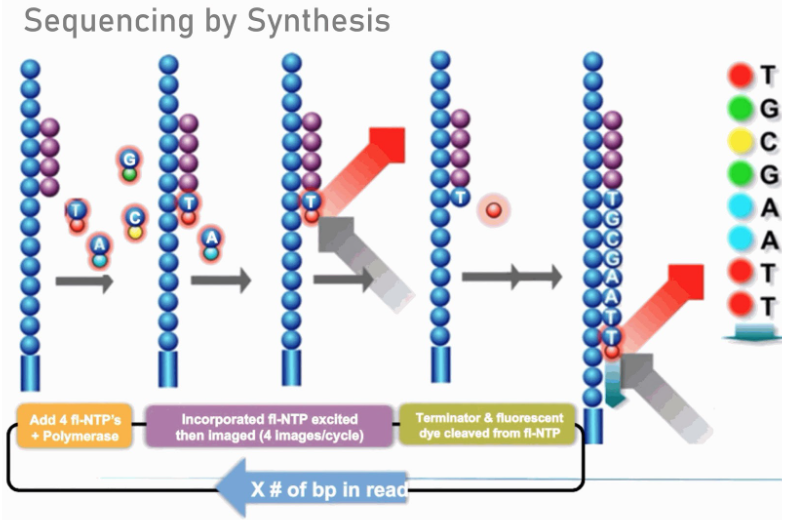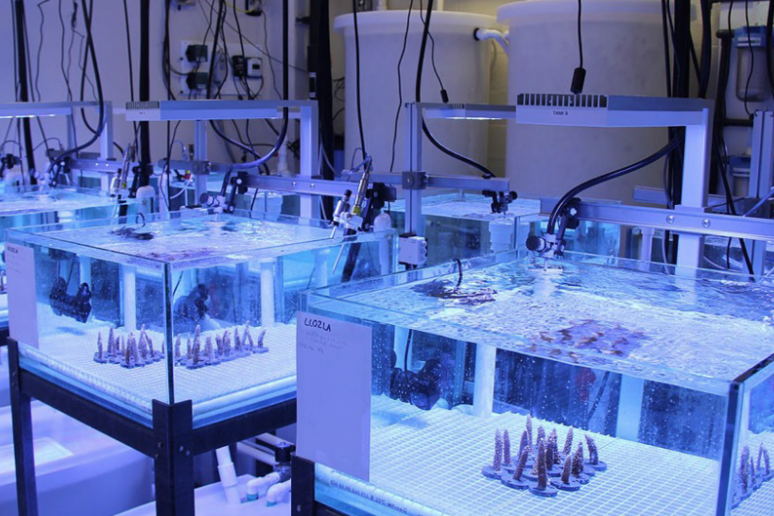In this article, I will explain how new scientific methods are beginning to make their way into reefing and what the future may hold for applying such technology.
Overview of the “omics” approach
In the past two decades, science has reached new heights due to the continued acceleration of technology. In-silico techniques, breakthroughs in semiconductor technology, and the fast track of Moore’s law have allowed for the emergence of novel methods. One example of such technologies is the “omics” family. These fields of study deal with high throughput analysis of one sub-section of a biological system. Examples are
– Genomics: analysis of the DNA in a system
– Transcriptomics: analysis of the RNA in a system
– Proteomics: analysis of the proteins expressed in a system
– Epigenomics: analysis of reversible time-dependent changes expressed in DNA
– Metabolomics: analysis of the metabolites present in a system
These are the five primary umbrella families of study in the omics age, but this technology can be applied in specific ways, such as with acetyl omics, which analyzes the subset of proteins that can be acetylated, or interferomics, which analyzes the immune systems deployment of interferons to respond to viral infection.
How Does This Technology Work?
As mentioned above, these methods have a high throughput, meaning a massive number of samples are tested simultaneously. In particular, this has had a profound impact on genetics. In the past, if one wanted to analyze the DNA present in a system (let’s use a pond, for example), specific probes would have to be designed to “fish” for known species in that pond. Now, with metagenomics and next-generation sequencing, instead of searching for one species at a time, we can see all the life in that pond – even life we never knew existed.
While genomics gives a view of what DNA is in a system, transcriptomics shows us which DNA is activated during specific points. This is extremely useful as it allows us to see how the system responds to external environmental changes. In the context of coral, many studies have been conducted analyzing the transcriptome of corals to see what genes turn on during excess heat or external infection, giving valuable insight into how our animals react to dire situations. The activation of heat shock proteins, oxidation-reduction management, and regulation of bicarbonate transporters are all examples of things transcriptomics has elucidated for corals.
Metabolomics is my favorite approach as it allows for a view of a system’s metabolites. While the other approaches certainly give a fuller picture than we had in the past, metabolomics presents an even better birds-eye view of a system, as the consequence of any biological pathway is typically the creation or regulation of biomolecules. That’s the critical connecting bridge between micro and macro – how individual cells begin to change the world around them.

While we have already learned an enormous amount from deploying these technologies, arguably even more important than that, data is the breakthrough in conceptualization it’s caused. Almost all systems are now viewed with an ecological lens – even the human body. We are not just humans but an assemblage of many creatures that all work together to make our meat suit operate as it does. The flora in our gut and brain give us neurotransmitters that help regulate our mood and cognition, the bacteria on our skin aid in immune protection and act as a first line of defense against invaders, and there’s even new data suggesting an unbalanced human microbiome may be associated with conditions such as Crohn’s disease. Health and medicine are quickly moving from a system of elimination to propagation – where instead of using systemic approaches to wipe the system clean, ecological concepts of balance are coming into play. If the correct species are in the right proportions in a biological system, they regulate themselves and their environment. This is something that is easily applied to reefing.
Application to Reefing
While this technology is widely used in studying coral, commercial applications have yet to be applied to the hobby. Except for one, – biotech company Aquabiomics offers a service where users can send a water and biofilm sample to their lab, where it’s processed and sequenced. Their approach employs metabarcoding – the same technology behind the example I gave with the pond above. This method involves amplifying a highly variable but conserved region of the genome across the sample and sequencing that sample with next-generation sequencing platforms capable of doing multiple reads simultaneously. Metagenomics takes advantage of the fact that each section of life has conserved features that make them similar. In prokaryotes (bacteria and archaea), one such region is the gene that codes for the 16s subunit of the ribosome. This gene is found in all prokaryotes, making it an easy target for amplification – even better, certain regions of it are highly variable, meaning the code is different in every species or even subspecies. This allows for an environmental sample to be filtered into one class of life (eukaryote or prokaryote) and then for all of that group to be sequenced. Similarly, all eukaryotes possess an 18s rRNA gene, which can act in the same way as the 16s example.
Aquabiomics has effectively utilized this technology to give users a view of their tank’s 16s or 18s life so people can know what’s in their water. This creates a foundation for microbial maintenance with the possibility of one day diagnosing an issue in and modulating one’s microbiome. The hobby is utilizing many approaches to do this right now, but all fall short of what’s possible with the advances of biotechnology. Carbon dosing and antibiotics can only take one so far, and often, they cause problems downstream, such as power vacuums, resistance, and saturating the systems with problematic species instead of beneficial ones.

While metagenomics has entered the industry, I am excited for the day when the cost-prohibitive nature of the other approaches decreases enough so they can be employed to analyze our systems as well. A combination of next-gen sequencing, ICP-MS, GC-MS, LC-MS, HPLC, and even potential applications of H-NMR on a system one day may lead to near-perfection of reef keeping, allowing users to test and measure nearly every aspect of their system – ionic, organic, biological and contaminants of all kinds. When that day eventually comes, we can genuinely begin chasing the dragon.
Main image – The NOAA coral OMICS lab. https://www.aoml.noaa.gov/omics/



